Saltee Islands
I have just returned recently from the Saltee’s. The weather was pretty reasonable considering the last couple of weeks, which were generally very unsettled and windy. When visiting this island you are very much at the mercy of the weather. It was a pretty hectic schedule for three days; very early starts and late evening sessions, which allowed us to get some really nice images once again.
Great Saltee is a very colourful island in spring, and May is the ideal time to go if you want to experience the island at its most colourful. Bluebells, wild thyme, and white campion were all at their flowering peak while we were there. The blue skies meant the sun was intense, even very early in the morning pushing the dynamic range of the cameras to the limit at times with the paler birds.
The bird population seems to be thriving with good numbers of most species. Puffins seemed to be scarce during the first two days of our trip with only a modest increase on the last session when the weather conditions were about to break. The wind increased in strength, making the landing a bit more challenging.
For me this trip was more about the landscape and birds in-situ, I have accumulated over the years a considerable collection of portraits. Once everyone got their portraits we spent some of the sessions looking at species in relation to their environment, which is very much in vogue these days. Below are some of the images I’ve managed to process quickly.
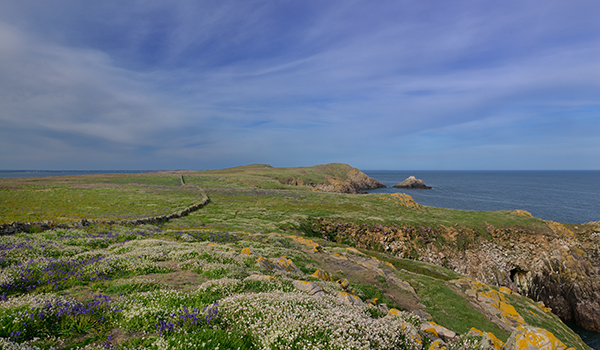
Great-Saltee looking towards the north-east of the island.
Nikon 24-70mm lens, f/16, ISO 100, tripod.
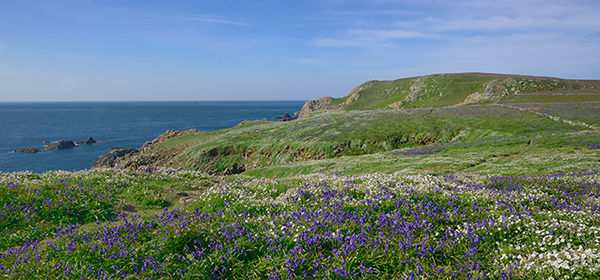
Great-Saltee looking south.
I have a weakness for panoramic photography and will always take advantage of any scene that lends itself to this format. Composite image comprising 8 images shot on a panoramic base and processed in Photoshop.
Nikon 24-70mm lens, f/16, ISO 100, tripod.
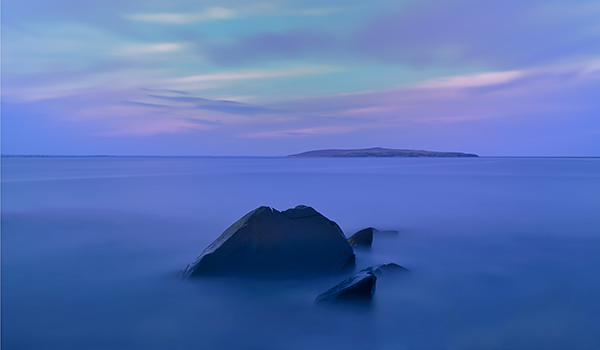
Little Saltee from the landing point on Great Saltee.
This was really a quickly grabbed shot. The daylight had almost gone with just a hint of colour in the sky. The boat was on its way across to pick us up so I had literally only time for a single exposure.
Nikon 24-70mm lens, f/16, ISO 100, tripod.
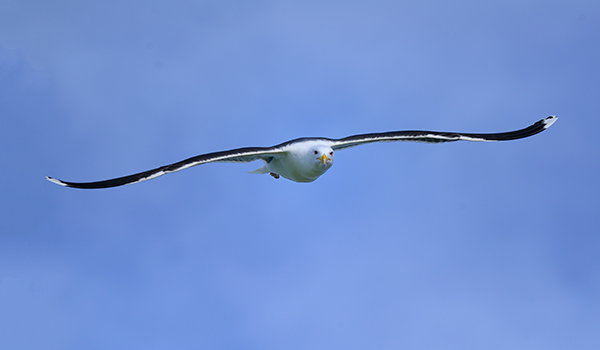
Great black-backed gull Larus marinus
This was one of my target species this year. There were good numbers about this year and I managed to get quite a few new images from a number of locations on the island.
Nikon 300mm 2.8 lens, f/5.6, ISO 200, tripod.
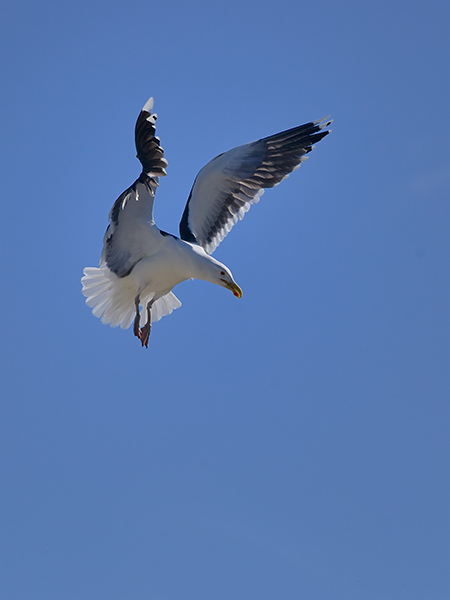
Great black-backed gull Larus marinus
Nikon 300mm 2.8 lens, f/8, ISO 200, tripod.
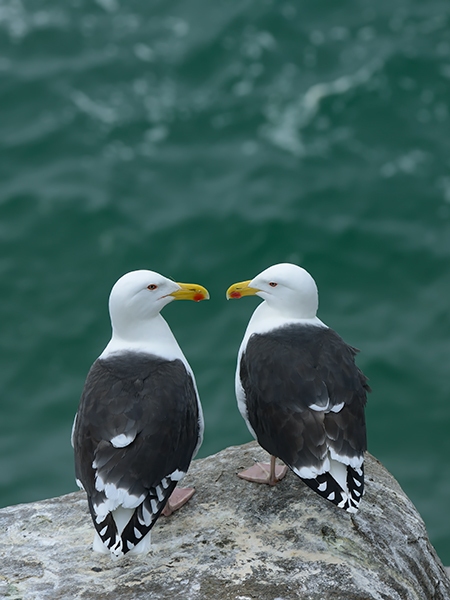
Great black-backed gull Larus marinus
Nikon 300mm 2.8 lens, f/8, ISO 200, tripod.
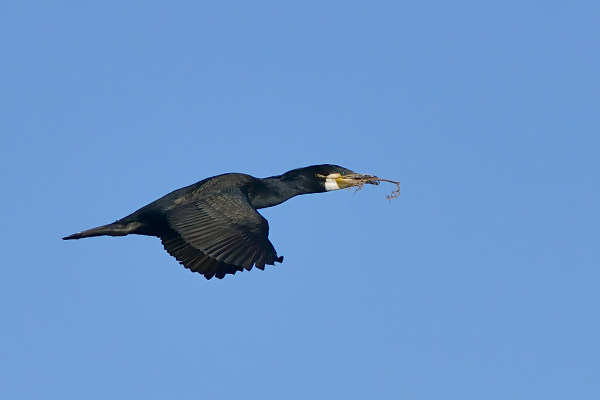
Shag Phalacrocorax aristotelis
I had better opportunities this year with bagging flight shots of Shags. Sometimes it can be a bit hit or miss, but I managed to get several that I was pretty pleased with.
Nikon 300mm 2.8 lens, f/5.6, ISO 400 handheld from a moving boat.
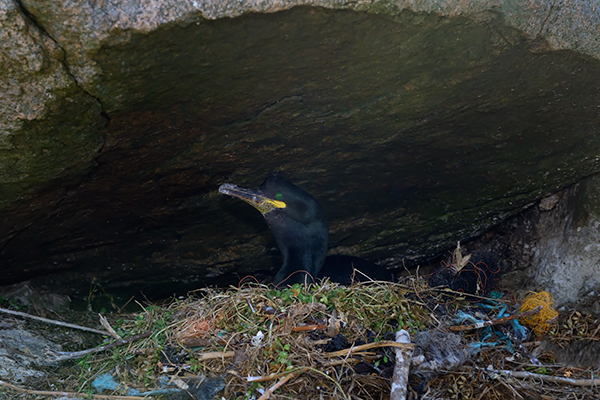
Shag Phalacrocorax aristotelis
This was actually a real challenge. The sunlight and glare were so intense that I could hardly see anything on the screen. I had to resort to flash to light the bird as the whole area under the stone slab was in darkness. As you can see this bird has accumulated everything from string to bits of old plastic for her nest.
Nikon 105mm micro Nikkor lens, f/8 ISO 100, flash, handheld.
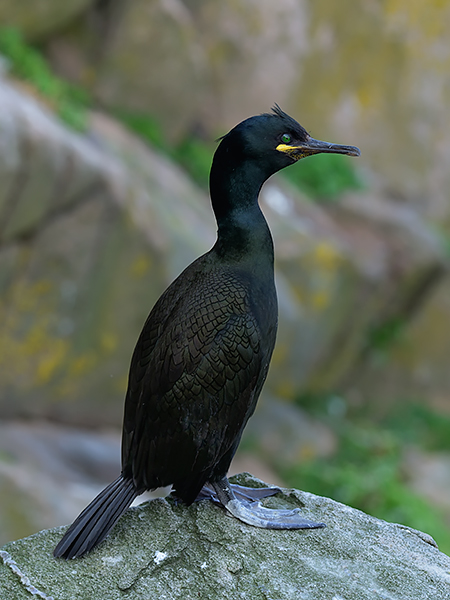
Shag Phalacrocorax aristotelis
Even though I have many portrait images of these striking birds I can never resist an opportunity when it comes my way.
Nikon 300mm 2.8 lens +1.7 converter, f/8 ISO 200, tripod.
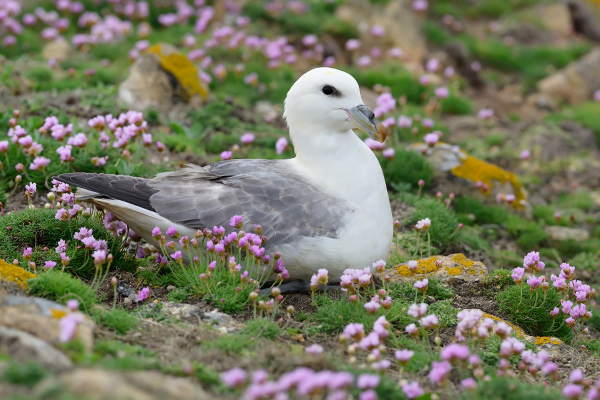
Fulmar Fulmarus glacialoides
Nikon 200mm micro nikkor lens, f/8, ISO 100, tripod.
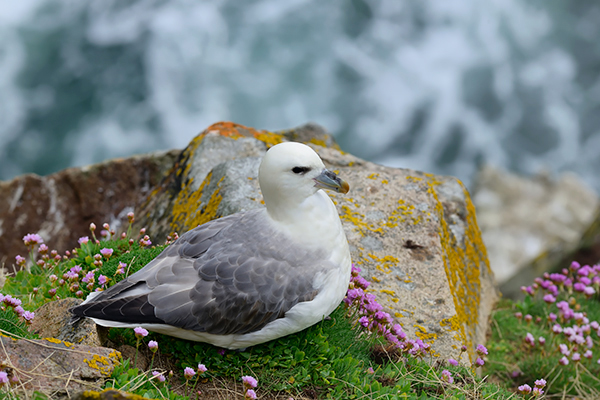
Fulmar Fulmarus glacialoides
There were plenty of opportunities for everyone to get great images of these birds among the thrift. I was also interested in environmental in-situ shots were possible. Most of the birds tend to nest on the ledges. I was lucky to find a couple that were actually on the flowery slopes.
Nikon 24-70mm lens, f/8, ISO 100, tripod.

Fulmar Fulmarus glacialoides
I really did go out on a limb to get this one. One of my colleagues held on to my feet as I lay over the edge of the slope to frame and compose this shot!
Nikon 24-70mm lens, f/8, ISO 200, tripod.

Puffin Fratercula arctica
Puffins were in short supply for most of this workshop, but I rattled off a few images where possible. There were not the same opportunities for behavioral images as last year, but at least everyone managed to see a small number of birds before the close of play.
Nikon 300mm 2.8 lens +1.7 converter, f/8 ISO 400, tripod.
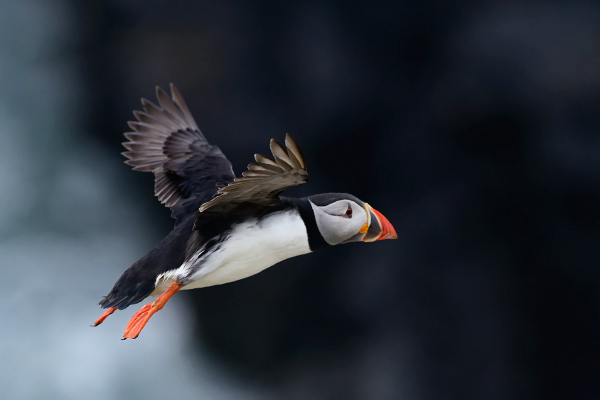
Puffin Fratercula arctica
Opportunities for flight shots of these birds were scarce and I was lucky to get a few shots at the occasional passing bird.
Nikon 300mm 2.8 lens, f/5.6 ISO 400, tripod.

Puffin Fratercula arctica
Nikon 300mm 2.8 lens, f/5.6 ISO 200, tripod.
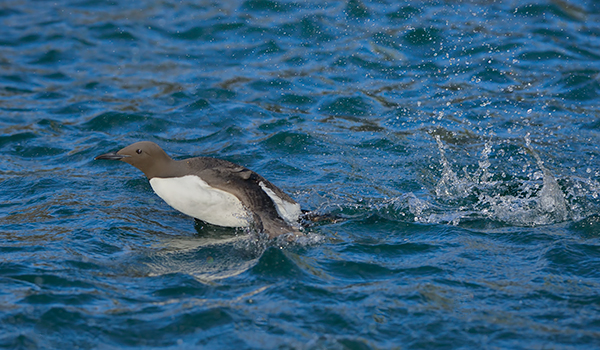
Guillemot Uria aalge
The early morning boat trip provided good opportunities for a wide range of images including take off’s from the water. The rocking of the boat at times made a bit more challenging. Sailing around the islands when conditions are good does provide a different perspective on the cliffs and bays.
Nikon 300mm 2.8 lens, f/8 ISO 800, handheld.
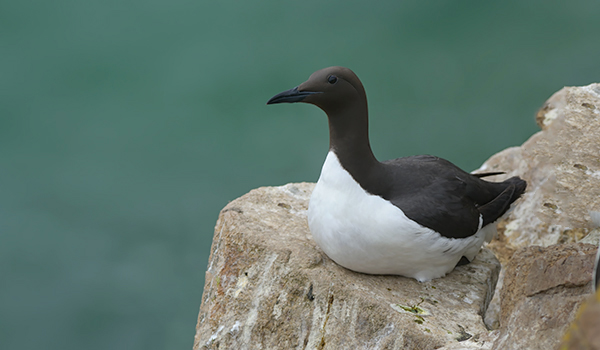
Guillemot Uria aalge
Nikon 300mm 2.8 lens +1.7 converter, f/8 ISO 200, tripod.
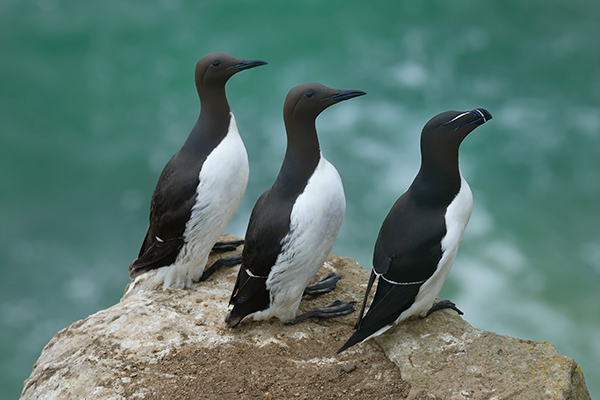
Guillemot Uria aalge
The lighting conditions during the last early morning session proved to be more favourable for portrait shots. It was the only overcast session we had throughout the whole trip!
Nikon 300mm 2.8 lens, f/5.6 ISO 200, tripod.
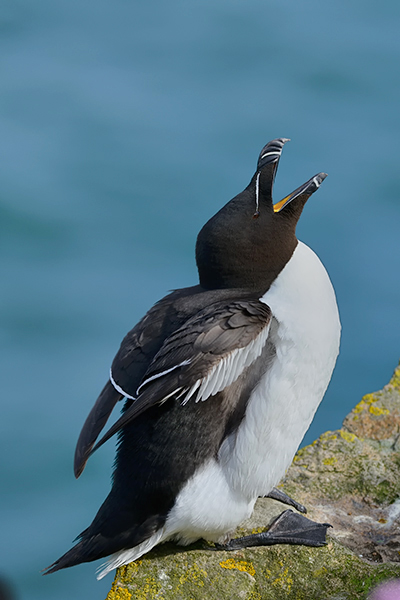
Razorbill Alca torda
Nikon 300mm 2.8 lens, f/5.6 ISO 200, tripod.
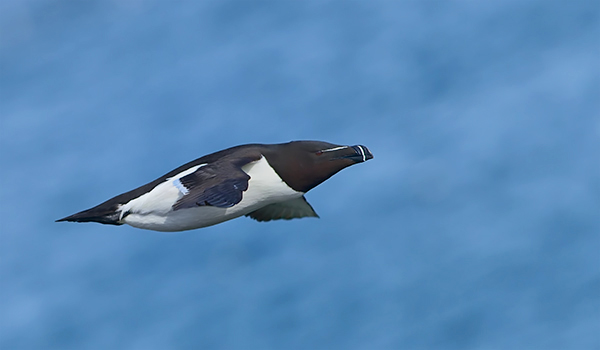
Razorbill Alca torda
Flight shots of these birds are always challenging, even with the best of equipment.
Nikon 300mm 2.8 lens, f/5.6 ISO 400, tripod.
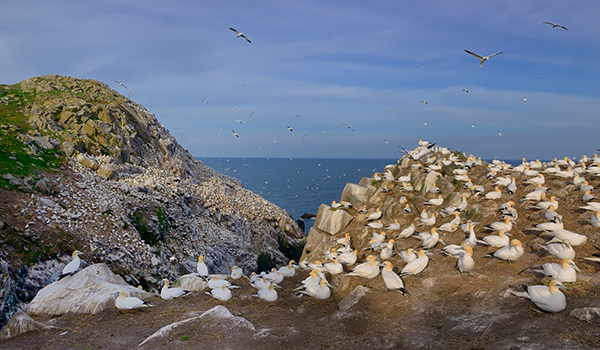
Gannet Morus bassanus
A trip to the islands would not be complete without the trek to the gannet colony. Despite having 100’s of images it is still hard to resist the these charismatic birds.
Nikon 24-70mm lens, f/11, ISO 400, tripod.
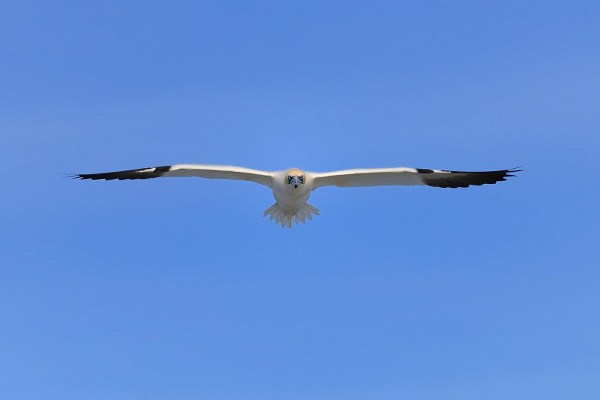
Gannet Morus bassanus
This was one of the few occasions when there were no encroaching birds to spoil the view. I liked this shot because of the menacing appearance of the bird as it flew towards me!
Nikon 300mm 2.8 lens, f/8 ISO 400, tripod.

Grey-Seal Halichoerus grypus
Throughout the sessions ther,e were always inquisitive onlookers from a safe distance.
Nikon 300mm 2.8 lens +1.7 converter, f/8 ISO 400, tripod.

Common Seal Phoca vitulina
Nikon 300mm 2.8 lens, f/8 ISO 400, handheld.
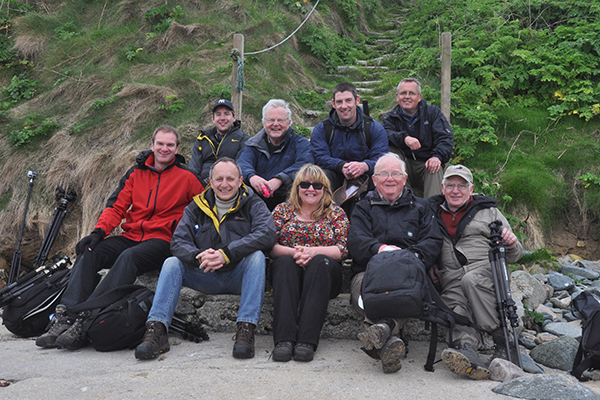
Some of the photographers on this trip.

